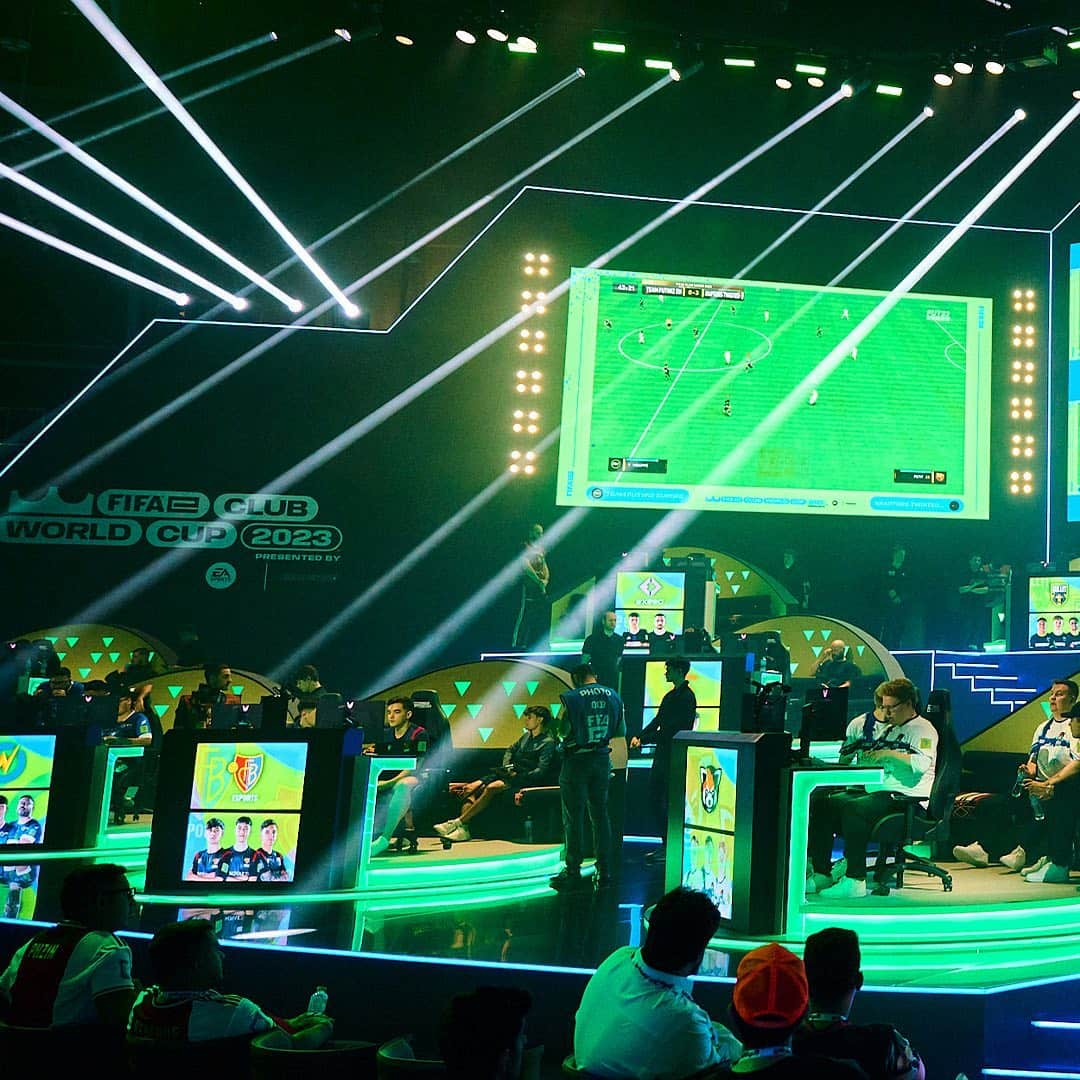Esports
Esports Viewership vs Traditional Sports: A Deep-Dive Comparative Analysis

A monumental shift has been reshaping the landscape of competitive games and entertainment over the last decade. Esports, or electronic sports—organized, competitive video gaming—has been steadily gaining ground, challenging and rivalling traditional sports in certain areas, especially in terms of viewership. This comprehensive article sets out to explore the vibrant and ever-evolving world of esports, its viewership, and juxtaposes it with the longstanding, globally established realm of traditional sports viewership.
Understanding Esports
Defining Esports
Electronic sports, more commonly known as esports, encapsulates the world of competitive video gaming. This sphere involves individuals or teams competing in video game tournaments, often professionally organized, testing their skills, strategy, and teamwork. Akin to traditional sports, esports demands a high level of discipline, practice, and tactical acumen from its participants.
The Rise of Esports
Esports has seen an astronomical rise since its humble inception in the early 2000s. It has steadily morphed from being a niche sector in the gaming industry to a global phenomenon, pulling in nearly 500 million people from around the world as participants or spectators. This ascension is largely credited to the explosion of internet accessibility and the evolution of digital technology, fuelling esports into a multi-billion dollar industry.
Major Esports Games and Tournaments
Diverse in its offerings, esports covers a wide array of games, each with its own unique community, professional players, and tournaments. Dominating the esports scene are powerhouse titles like “League of Legends” from Riot Games, “Dota 2” from Valve Corporation, and “Fortnite” from Epic Games. These games often hold global tournaments, with events like the League of Legends World Championship, The International Dota 2, and Fortnite World Cup, attracting viewership in the millions, rivaling, and at times exceeding, traditional sports events.
Esports Viewership and Demographics
With the rapid advancement of technology and digital platforms, esports viewership has followed an upward trajectory, reaching stratospheric heights. Platforms like Twitch and YouTube Gaming have revolutionized the ease with which fans can engage with their favorite esports, contributing significantly to its soaring popularity. The core demographic of esports viewership leans heavily towards younger, technology-driven individuals, with a substantial portion being millennials and Gen Z.
Read more about esports history here
Understanding Traditional Sports
What Are Traditional Sports?
Traditional sports refer to all physical games that require skill, strategy, and physical prowess, often played in teams but can also be individual-based. These sports, including but not limited to football, basketball, baseball, soccer, tennis and cricket, have been pillars of global culture, recreation, and entertainment for centuries.
Major Traditional Sports Events
Traditional sports punctuate their seasons with hallmark events that often amass global attention. Events such as the NFL’s Super Bowl, the NBA Finals, FIFA World Cup, and the Olympic Games have often commanded viewership in the billions, earning them the distinction of being some of the most-watched television broadcasts worldwide.
Traditional Sports Viewership and Demographics
Despite the digital boom, traditional sports viewership has managed to stay robust, with sports like soccer, American football, and basketball boasting a dedicated global fanbase. Television networks like ESPN and Sky Sports have been instrumental in bringing these sports to the living rooms of fans, facilitating extensive coverage. The demographic for traditional sports viewership is varied, with older generations displaying more affinity towards traditional sports.
Comparing Esports and Traditional Sports
Esports vs Traditional Sports Viewership
Despite the enduring popularity and established history of traditional sports, esports is making a compelling argument for the future of competitive entertainment. The esports industry’s rapid growth is significantly attributed to its skyrocketing viewership, particularly among younger audiences. The rise of professional gamers participating in international tournaments and the corresponding surge in audience interest points to a shift in the paradigm of competitive gaming and sports viewership.
At the crux of esports’ appeal is the virtual world’s accessibility, providing a global platform where professional gamers, irrespective of geographical boundaries, can compete in high-stakes tournaments. Not being bound by physical space and time has given esports a unique advantage. Competitive gaming events are streamed live on digital platforms like Twitch and YouTube, enabling global viewership at any given moment, broadening its fanbase beyond geographical constraints.
Riding this wave of digital accessibility, esports has experienced rapid growth in viewership. In fact, some esports events have started to outpace some traditional sports in viewership among specific demographics. For instance, the 2022 League of Legends World Championship Finals drew in more than 5.14 million concurrent viewers.
However, despite the impressive strides made by esports, traditional sports still reign supreme in terms of overall global viewership, primarily due to a broader demographic appeal and deeply rooted cultural significance. Iconic events like the FIFA World Cup or the Olympic Games have amassed viewership in the billions. These traditional sports have decades, even centuries, of established fandom and cultural significance that contribute to their enduring popularity. The World Cup 2023 Final for example reached 1.5 billion viewers according to Fifa.
Yet, the emergence of professional gamers as mainstream celebrities, coupled with the rapid growth of esports, presents an intriguing narrative. Will esports one day surpass traditional sports in viewership? While the answer to that remains speculative, the trend lines suggest a closing gap, and given the digital age’s demands, the scales could tip in favor of esports among younger generations.
The dynamic world of esports, supported by professional gamers, competitive gaming communities, and technologically savvy audiences, is a testament to the changing landscape of sports viewership. As traditional sports work to innovate and adapt to this rapidly changing digital climate, the symbiotic growth of both these domains continues to shape the future of sports and entertainment.
Revenue and Market Size
In terms of revenue and market size, esports has been experiencing impressive growth, fueled primarily by advertising, media rights deals, and sponsorships. The global esports market was valued at just over $1 billion in 2020, and that figure is projected to more than double by 2023. However, traditional sports, with its deeper roots and larger audience base, still dwarfs esports in overall revenue and market size. The global sports market was valued at over $488 billion in 2020.
Player Salaries and Sponsorships
The financial aspect of esports and traditional sports also reveals disparities. While top esports players can earn millions of dollars in prize money, their overall earnings don’t typically match those of their traditional sports counterparts, whose salaries often reach tens of millions of dollars. Sponsorships in esports, while growing, don’t yet compare to the immensely lucrative deals seen in traditional sports.
The Impact of Technology
The Role of Technology in Esports’ Rise
The role of technology in propelling esports to its current stature cannot be understated. From the evolution of gaming hardware and high-speed internet to the rise of streaming platforms, technology has made esports accessible to a global audience. Furthermore, emerging technology trends like virtual reality and artificial intelligence are poised to revolutionize esports, pushing its potential to unprecedented heights.
Technology’s Effect on Traditional Sports Viewership
On the other hand, the impact of technology on traditional sports viewership presents a mixed bag. It’s undeniable that technology has increased accessibility to sports content, thanks to live streaming and on-demand services. However, it has also presented viewers with a wider range of entertainment options, thereby fragmenting the viewership. Furthermore, the shift from scheduled TV broadcasts to ‘anytime, anywhere’ digital viewing is reshaping how and when people consume traditional sports.
The Influence of Esports and Traditional Sports on Youth
Impact of Esports on Youth Culture
Esports isn’t merely a form of entertainment for the younger generation—it has become a cultural phenomenon. Its influence permeates into various aspects of youth culture, from clothing trends to language use, indicating its significant cultural impact.
Role of Traditional Sports in Youth Development
In contrast, traditional sports have long played a pivotal role in youth development, offering a platform to encourage physical fitness, teamwork, discipline, and a sense of community. Despite the allure of the digital world, these sports continue to hold immense sway over young people’s lives, highlighting their timeless appeal.
Investment in Esports and Traditional Sports
Esports Investment Landscape
The promising growth trajectory and vast potential of esports have caught the attention of investors worldwide. From venture capitalists and tech companies to celebrities, many have plunged into the esports sector, seeing potential for significant returns. Major brands like Intel, Red Bull, and Coca Cola have also entered the fray, sponsoring tournaments, while others invest in esports teams or leagues.
Traditional Sports Investments
Investments in traditional sports have long been a proven lucrative venture. Sports teams, especially those in major leagues like the NFL, NBA, or English Premier League, are often valued in the billions, making them attractive investment opportunities. Sponsorship deals in traditional sports also promise significant returns, with major brands like Nike, Adidas, and Pepsi pouring millions into partnerships with teams and star athletes.
As this comprehensive comparison reveals, the world of esports, although a relatively new entrant, is making significant strides, challenging the traditional sports sector. As technology and cultural tastes continue to evolve, it will be fascinating to observe how these two domains will influence each other, coexist, and continue to shape the future of entertainment and sports.
The latest sports news and gossip right here on JC Sports News


Motorsport
Motorsports Racing Industry Statistics

Hockey Wags
Nazem Kadri’s Wife: Jewelry Queen Ashley Cave









